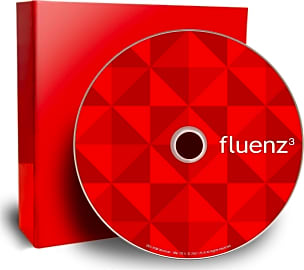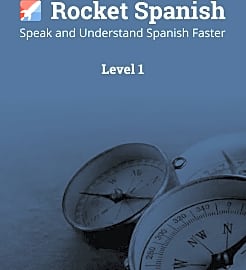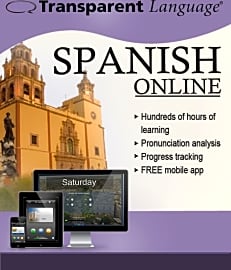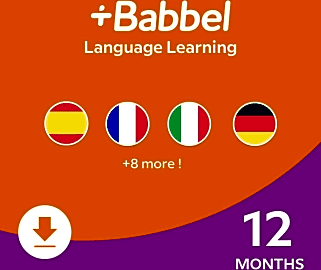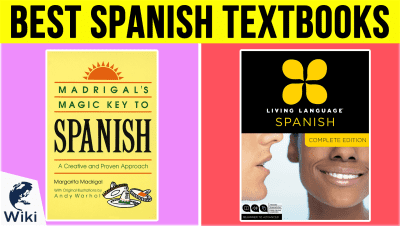The 6 Best Spanish Software

This wiki has been updated 40 times since it was first published in June of 2015. If you're learning the language to improve your job prospects or you're hoping to converse with confidence the next time you travel, Spanish teaching software can be a great tool for honing your linguistic skills. We've focused mostly on the general Latin American dialect because it's considerably more widespread than European Spanish, but many courses are offered in Castilian as well. When users buy our independently chosen editorial picks, we may earn commissions to help fund the Wiki.
Editor's Notes
April 01, 2020:
Nothing helps you learn a new language as well as complete immersion, but if you can't just up and leave your native country for a Spanish-speaking one, there are some excellent interactive resources available to you. And one of the great things about all of the options we've selected are that they're easy to use on almost any electronic device, no matter how budget-friendly.
For starters, Rosetta Stone Lifetime has taken some heat in the past for being somewhat ham-handed, but it's generally agreed that it's made great strides in the last several years in terms of effectiveness and enjoyment. It's one of the only language courses that offers an entirely immersive learning trajectory; while it can be hard to get used to at first, there's a reason it's the most popular out of all the big-name courses. This edition, in particular, is especially helpful because it's a lifetime offering rather than a short-term subscription.
Fluenz Version 3 isn't just incredibly thorough, it also does a decent job of keeping users interested. Above all, though, it's known for its gradual approach that starts at the very beginning and, given enough time and practice, can elevate almost anyone to a conversational level. Rocket Spanish makes it a point to stress pronunciation, which helps tourists, frequent travelers, and transplants to fit in and understand the people around them better in real-life situations. Transparent Language Student Edition has a similar focus on pronunciation, although it's best for highly driven folks as it isn't quite as entertaining as some other options. Babbel: Learn a New Language is a bit like it that respect, and has even been called tedious at times, but if you're determined to learn Spanish, it can certainly help. Do be aware, however, that it's also been called difficult, so easily frustrated students may want to look elsewhere. Then there's Living Language Complete, which isn't nearly as interactive as the others on our list, but is highly affordable and goes great with additional resources such as Spanish language textbooks and especially some of the options in our Special Honors section.
Special Honors
Pimsleur Premium Simon & Schuster offer a few levels of their extremely popular Pimsleur program, and to access their Premium edition you'll have to purchase it through their website. It's extremely expensive, but it's one of the most well known and comprehensive options on the market. pimsleur.com
iTalki There's nothing like live, 1-on-1 instruction to help you learn a language, and at iTalki you can set up appointments with experienced professionals and native speakers who can aid you with lessons tailored to your specific level of knowledge. You might even be surprised at how affordable each lesson is. This service makes a particularly good companion to any of the software we've highlighted here. italki.com
Memrise This is a straightforward online course aimed at providing easy understanding of modern speaking. It does away with simplistic, rote memorization and immediately starts teaching concepts that you'll need in everyday conversation, and it's also not too expensive. memrise.com
Mango Languages It's an online program suitable for use on a PC, tablet, or smartphone, and it focuses on grammar, vocabulary, pronunciation, and culture, the four most important aspects of learning a new language. It's particularly good for beginners and intermediate students who want to keep their skill sharp between semesters. mangolanguages.com
Getting Started With Spanish Software
Gone are the days of sitting through boring grammatical lectures and forcing yourself to remember hablo, hablas, habla, hablamos, and so on by sheer force of will.
If you haven't yet started language learning by way of computer software, well, welcome to the future. Gone are the days of sitting through boring grammatical lectures and forcing yourself to remember hablo, hablas, habla, hablamos, and so on by sheer force of will. Instead, Spanish software is built on the principle that learning a language should be fun and interactive, which will not only help you learn but also keep you from giving up out of tedium. You can expect games, videos, challenges, animations, speech recognition, and much more, all created to keep you engaged and focused — an important requirement for learning.
Of course, there's more going on under the surface; just playing games and repeating random phrases now and then probably wouldn't make you fluent. A quality piece of language learning software should harness methodology built upon the principles of second language acquisition and language education, two ever-evolving subfields of linguistics. Rosetta Stone, for example, uses what they call "Dynamic Immersion," which attempts to recreate for users an experience that is similar to how children learn a language. Users build meanings from input in the form of pictures and text, much as a child would, instead of undergoing explicit grammatical instruction. Such a methodology attempts to take advantage of the way your brain is already wired to learn a language and can ensure that your Spanish is tied to real-world meaning and context from the start.
Rosetta Stone's methods are not your only choice. Just as there are various theories about how we learn languages, there are various types of Spanish software, each with its own methodology and user experience. To select the one that will work best for you, you'll want to consider a few factors. First, do you have a lot of time to invest or are you looking for conversational skills quickly? Do you prefer lots of pictures and videos, or does audio capture your focus? What about explanations — do you expect highly detailed help, or are intuition and deduction more your style? Finally, will you enjoy using speech recognition? Think about these questions as you select your Spanish software. Look for the versions that match your expectations, and you'll have the fastest and most enjoyable learning experience.
Tips For Accelerated Language Learning
No matter how much fun your Spanish software is, you're going to have to put some effort into learning español. The key, however, is to work smarter, not harder. You want the energy you invest in your language study to pay off as much as possible, since you probably don't have unlimited time and attention. Fortunately, scholars and polyglots have a few tried-and-true tips that'll help give your studying a boost.
Because the only way you're going to remember new words while not forgetting the old ones is through constant repetition.
Perhaps the most important is to commit and spend some time on your Spanish software every single day. Not every other Tuesday, not on the weekends if you feel like it, not whenever you have a few minutes between meetings. Every day. Why? Because the only way you're going to remember new words while not forgetting the old ones is through constant repetition. This sounds strict, but you can make it fun — you could reward yourself when you hit X number of consecutive days or set up a challenge against a friend.
You should also aim for as much immersion as you can possibly manage. Spanish software is your starting point, but thanks to the number of resources on the internet, you should have plenty of materials with which to surround yourself. These include movies, TV shows, newspapers, magazines, podcasts, books, music, and so much more. And if you aren't at the level to understand, say, "Cien años de soledad," there are still plenty of resources to try, including cartoons, graphic novels, and graded readers.
And then there's probably the most difficult task: speaking. Sometimes language learners wait to start speaking practice, because they want to ensure they're good enough. But successful language learning requires accepting that you're going to make some errors. Think about learning to play an instrument. Did Jimmy Page pick up his guitar for the first time ever and blaze through the solo in Stairway to Heaven? No, because learning to do something new requires practice, which inevitably entails making a few mistakes. Most people who speak more than one language understand this, and anyway, any embarrassment you feel is probably much worse in your head. Cold comfort, perhaps, but true nonetheless.
A Few Facts About Spanish
Even though English is considered to be the world's common tongue, Spanish is generally estimated to have more native speakers, at 570 million to English's 400 million. The number of Spanish speakers expands to around 661 million when taking into account those for whom Spanish is not their first language. The number of people learning this language is nothing to sneeze at, either. Approximately 21 million people are estimated to be pursuing Spanish language education, so as a learner, you have plenty of company.
Even though English is considered to be the world's common tongue, Spanish is generally estimated to have more native speakers, at 570 million to English's 400 million.
Spanish is the official language of over 20 countries, including Equatorial Guinea and Paraguay, and can trace the majority of its vocabulary back to Latin. As you may know, this connection makes it one of the Romance languages; specifically, it falls into the Iberian Romance group that also includes Portuguese and Galician. Although these languages can certainly sound romantic in the sense of "passionate," the name actually refers to their connection with the Roman vernacular, as distinguished from proper Latin. But, to be fair, the word "romance" (in the context of love or affection) shares the same origin, thanks to popular tales from medieval literature with these themes, also composed in the Roman vernacular.
As with the other Romance languages, Spanish today offers speakers access to a wide and exciting cultural world that includes literature, music, traditions, dance, cuisine, and more, from all parts of the globe. Your newfound Spanish skills could lead you to dancing the tango like an Argentinian, studying the folk tales of México, or simply singing some new songs at karaoke. Whether you're learning for business or pleasure, then, you're sure to be enriched in ways you didn't expect.


